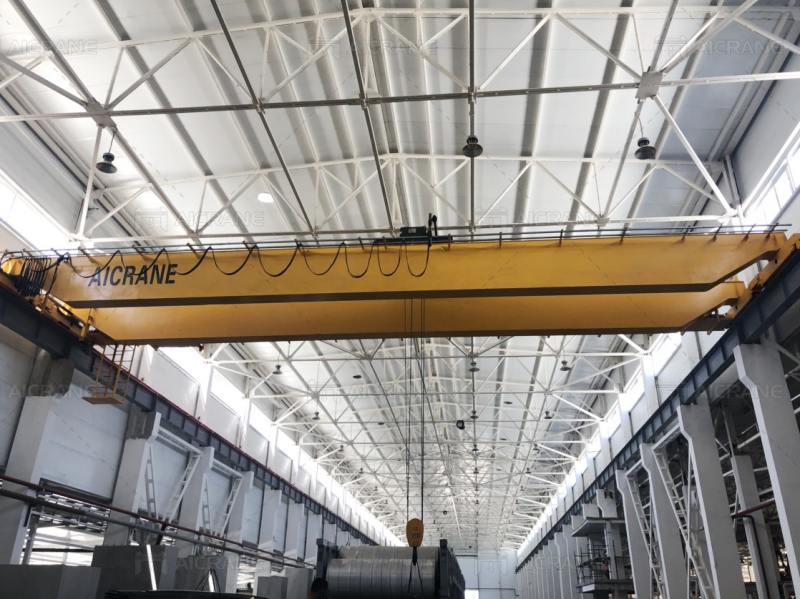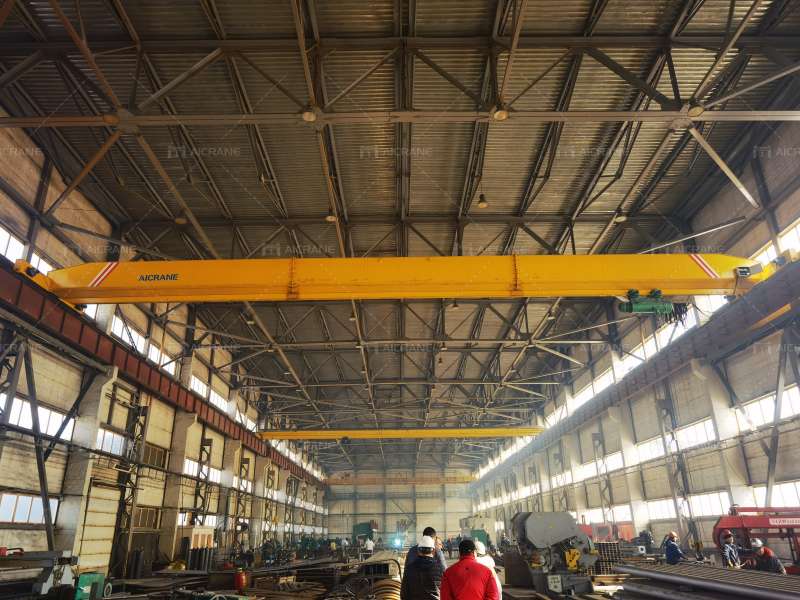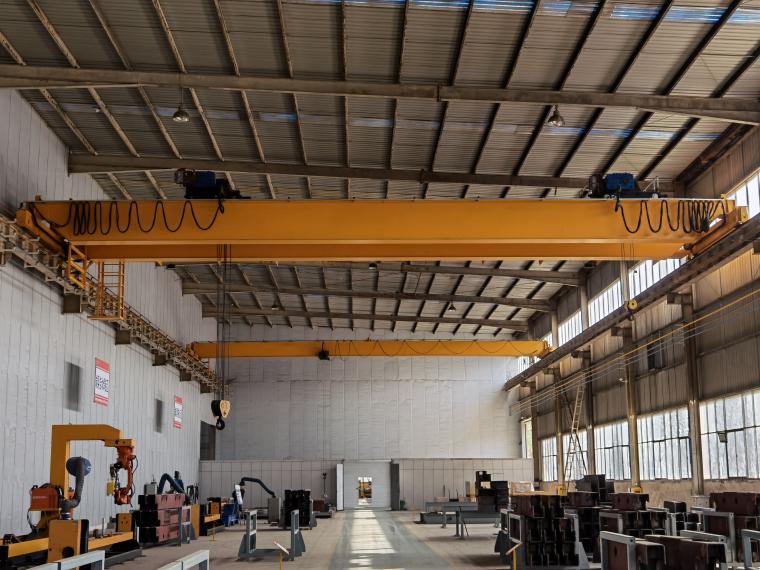Indoor overhead cranes have become essential tools for industries that require safe, efficient heavy lifting within confined spaces. They provide versatile and space-efficient solutions for manufacturing plants, warehouses, and workshops that deal with substantial loads but have limited room for maneuvering. Selecting the right indoor overhead crane can significantly enhance workflow and improve safety, especially when handling heavy-duty tasks in restricted areas. This article explores the types of indoor overhead cranes available, key benefits, and factors to consider for choosing the best solution for confined spaces.

Why Choose an Indoor Overhead Crane?
An indoor overhead crane is an ideal solution for heavy-duty lifting in limited space for several reasons:
- Efficient Use of Vertical Space: Unlike forklifts or other lifting equipment, overhead cranes operate from above, maximizing the use of vertical space. This allows for clear floor space, which improves maneuverability and optimizes storage within a facility.
- Precision Handling: Overhead cranes offer precise control over load movements, enabling operators to navigate safely around obstacles and position loads with high accuracy.
- Enhanced Safety: By lifting loads from overhead, these cranes minimize the risk of accidents and injuries associated with ground-level transportation, as well as prevent damage to products, equipment, and facility structures.
- Increased Productivity: Indoor overhead cranes reduce manual handling and streamline heavy lifting, helping to improve productivity by allowing operators to transport large loads efficiently within confined areas.
Types of Indoor Overhead Cranes for Confined Spaces
Several types of indoor overhead cranes can be tailored to fit confined spaces and heavy-duty lifting needs:
- Single Girder Overhead Crane: A single girder overhead crane has one main beam supporting the hoist and is ideal for facilities with low headroom. This type of crane is generally more affordable and easier to install, making it a suitable option for medium to light-duty lifting in limited spaces.
- Double Girder Overhead Crane: For heavier loads, a double girder overhead crane provides more support and higher lifting capacity. With two beams, this crane can lift heavier loads at greater heights, making it ideal for heavy-duty applications in confined spaces where large volumes of materials need to be handled.
- Low Headroom Cranes: For facilities with restricted vertical space, low headroom cranes are specifically designed to maximize lifting height while minimizing the distance between the hoist and the ceiling. These cranes make optimal use of vertical space, allowing for higher lifts even in tight areas.
- Underslung or Suspension Crane: When floor space is extremely limited, an underslung crane can be suspended from the ceiling or roof structure. This crane operates below the support structure, providing flexibility in areas where traditional overhead cranes cannot be installed due to spatial constraints.

Benefits of Indoor Overhead Cranes in Confined Spaces
Investing in an indoor overhead crane offers several advantages for heavy-duty lifting in confined areas:
- Space Optimization: Overhead cranes allow facilities to maximize floor space for storage or other essential activities, as the crane’s track can be installed high above ground level.
- Versatility in Operations: With indoor overhead cranes, operators can perform a variety of lifting, moving, and positioning tasks with the same piece of equipment. Many overhead cranes are customizable, allowing you to tailor lifting heights, spans, and load capacities based on specific operational needs.
- Reduced Operational Costs: By reducing the need for multiple lifting equipment and minimizing manual labor, indoor overhead cranes lower operational costs and improve resource efficiency.
Considerations for Selecting an Indoor Overhead Crane
When choosing the right crane for a confined space, consider the following factors:
- Load Capacity and Lifting Height: Determine the heaviest load your crane will need to lift and ensure the crane’s rated capacity exceeds this requirement. Additionally, factor in the height required to lift loads safely without interfering with the building’s structure or other equipment.
- Headroom and Facility Dimensions: Evaluate the available headroom and layout of your facility. Low headroom cranes or underslung cranes are ideal for spaces with limited vertical space, while other configurations may be suitable for larger, open facilities.
- Customization Options: Many indoor overhead cranes offer customizable options such as variable speed controls, wireless remote controls, and advanced safety features. Consider these enhancements to ensure the crane meets your unique operational requirements.
- Ease of Installation and Maintenance: For confined spaces, installation and maintenance should be as straightforward as possible. Many crane manufacturers offer compact designs and modular installations that are easier to set up in tight areas.
- Safety and Compliance: Ensure that the crane meets all relevant safety standards and regulations for overhead lifting. Safety features, such as anti-sway technology, load monitoring, and emergency stops, are crucial for maintaining safe operations in confined spaces.
To select a right and suitable overhead cranes for indoor lifting operations, it is important to choose a reliable crane supplier like Aicrane, the company provide wide range of crane solutions to match different requirements, and you can just contact the company to know more detailed information.

Working with a Trusted Manufacturer
Partnering with a reliable crane manufacturer is essential for obtaining a high-quality, durable indoor overhead crane tailored to your facility’s specific needs. A reputable manufacturer will provide guidance in selecting the right crane type, offer customization options, and support you with installation, training, and maintenance resources.
Additionally, look for manufacturers who provide warranties and ongoing support, as this ensures your crane operates smoothly for years to come. They can also assist with regulatory compliance and inspections, further enhancing operational safety.
In Conclusion
An indoor overhead crane is an invaluable solution for heavy-duty lifting in confined spaces, offering a range of benefits including enhanced space efficiency, increased safety, and improved productivity. By selecting the right crane type, considering load capacity, headroom, and facility dimensions, and working with a trusted manufacturer, you can find the perfect crane to meet your needs. Investing in the right indoor overhead crane will help your facility optimize workflow, boost productivity, and ensure safe and effective operations even in the tightest spaces.
